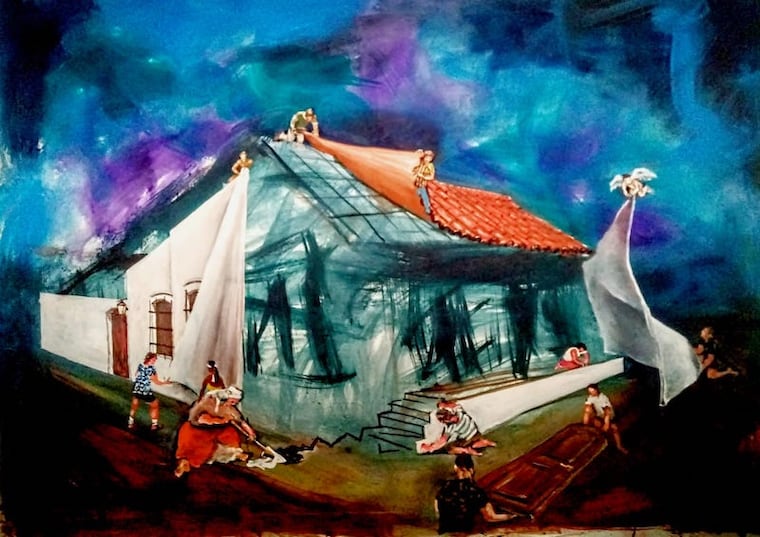Asunción’s cultural scene gained a new landmark this November with the opening of Cartografía del Retorno (Mapping the Return), an exhibition by Paraguayan artist Federico Caballero. The collection presents paintings and suspended installations that explore the memory of the historic centre and the emotional links that tie people to once-abandoned spaces. Moreover, the exhibition invites visitors to reflect on belonging, identity, and Asunción’s ongoing transformation.
A poetic journey through Asunción’s changing landscape

Caballero’s works draw inspiration from the evocative image of floating houses returning to their original place. This visual metaphor guides the exhibition, offering an intimate and symbolic reading of the city’s architectural past. The artist paints fragments of buildings, streets, and façades that once defined the historic centre but later suffered neglect or displacement.
These suspended structures create a sense of movement and fragility. Through them, the exhibition reflects on the desire to return and reconnect with the spaces that formed Asunción’s identity. Caballero’s approach blends memory with imagination, prompting visitors to re-examine how cities change and how their inhabitants adapt.
The concept coincides with renewed public efforts to repopulate the historic centre. Since urban programmes encourage housing projects, cultural activities, and restoration initiatives. Hence, Caballero offers a parallel artistic response, portraying the city as a living organism capable of regeneration. His floating houses become symbols of resilience, suggesting that what once drifted away can still find its place again.
Art as symbolic reconstruction of territory
One of the exhibition’s central ideas is the relationship between territory and affect. Caballero proposes that returning is not only a physical act but also a collective emotional process. Through oil paintings and installation pieces, he constructs an alternative map of the city, one where memory becomes a navigational tool.

This “sensitive map” shows a landscape where “suspended spaces acquire meaning once more. Air transforms into shelter, and houses appear ready to be lived in again.” The works hint at the possibility of rebuilding a shared sense of belonging through cultural expression. The exhibition invites visitors to consider how art can accompany real urban change and how creativity shapes community identity.
The exhibition’s setting strengthens this dialogue between past and present. Hosted in the Central Hall of the Staudt Cultural Space, the show is surrounded by the very streets and buildings that inspired it. The venue becomes part of the narrative, reinforcing the connection between the artwork and the city that shaped it.
How to visit
The exhibition is free and open to the public and can be visited at the Staudt Cultural Space. Located on Iturbe 333, near Mcal Estigarribia, Monday to Friday, from 9:00 to 17:00. Cartografía del Retorno remains available until 25 November 2025.
For more information, check Federico Caballero on Instagram.


